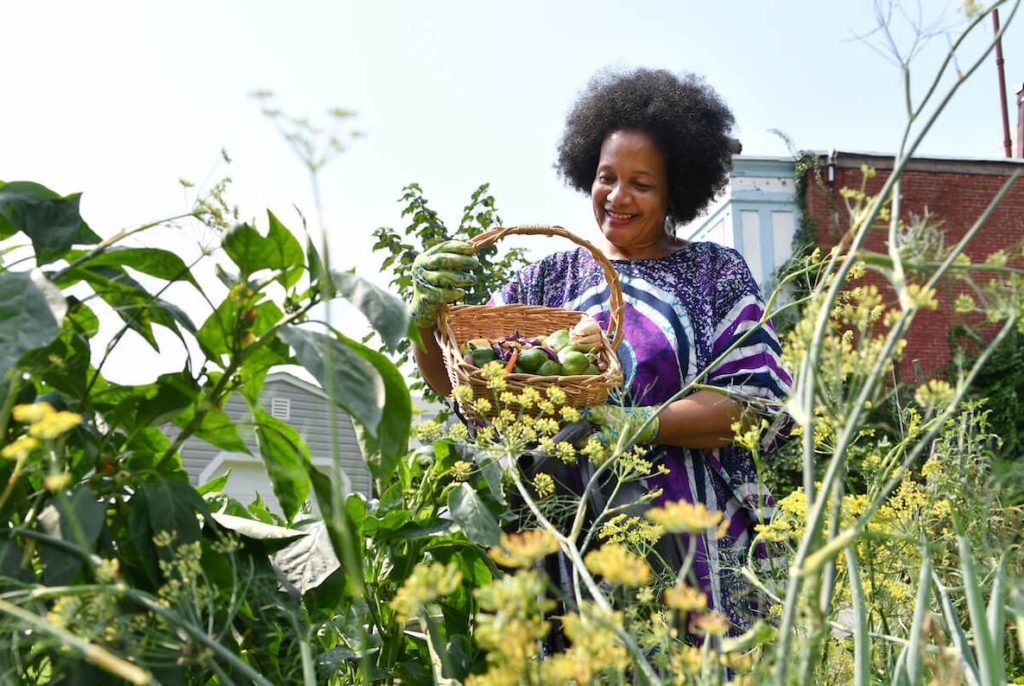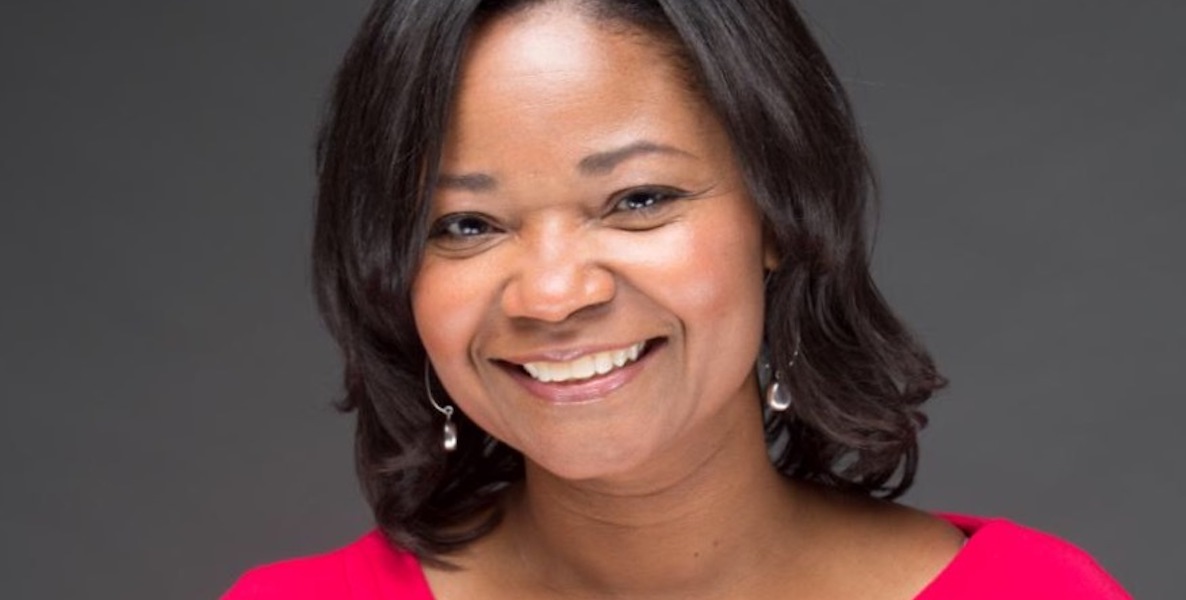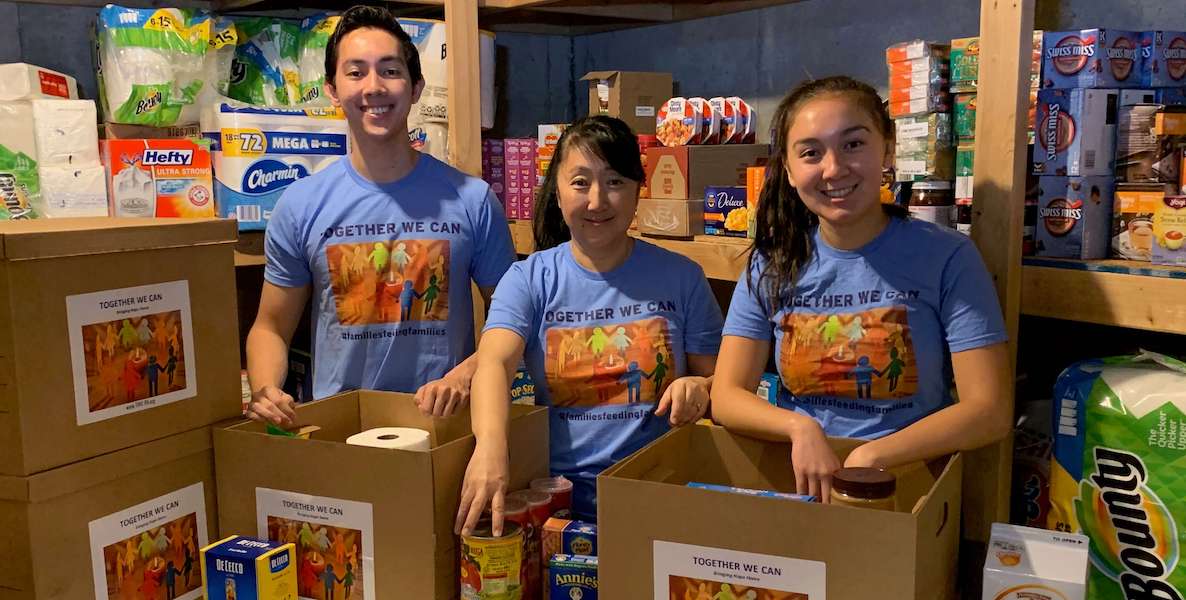While most of us were distraught about the world getting cancelled back in early March, longtime Philly garden guru Sally McCabe was thinking about our food system.
She worried farms and processors would close, distribution would be disrupted, people would hoard, groceries would get expensive (accurate predictions).
She and many of her colleagues at the Pennsylvania Horticultural Society (PHS), were thinking about how the pandemic would impact our food supply in the long term.
“We closed the Flower Show, we went home, we panicked, and we started shooting videos in our yards of, What can you grow if you can’t get to the store?” McCabe says. Have dry black beans, old potatoes or sprouting onions lying around? Stick them in the dirt!
“That’s the joy of it all is sharing,” Birchett says. “It’s so cool to share food, to share fresh vegetables, in a community like ours that is a food desert.”
As Philadelphians were laid off and lines at area food banks grew, they posted these zero-budget, spur-of-the-moment videos and it made them realize: “We’ve got the brain trust,” says McCabe. “People need to know how to grow food, and we need to be teaching them right now.”
They launched Harvest 2020 to mobilize their massive network of garden enthusiasts and educate and empower new gardeners to grow more this year. It has inspired the collective action of growers (grow food to feed yourself and your family), sharers (grow food to donate), and donors (help provide folks with access to gardening supplies) that answered the call. (It’s not too late to join!)
Since launching Harvest 2020 in May, over 10,000 people have helped grow and donate more than 17,000 pounds of fresh produce, distribute 35 gardening kits and install 32 home garden beds.
Public gardens like Chanticleer in Wayne converted ornamental flower areas into productive food gardens and regularly contribute to area food banks. And thousands of citizens have sown seeds in backyard plots, containers and windowsills to feed themselves and their neighbors, which is the part McCabe is especially excited about.
“The fact that neighbors are feeding neighbors—it’s not charity, it’s building networks,” she says. “It builds the security of the community.”

“The joy and the horror of Covid is time,” says Pat Imms, a psychiatric researcher at Penn’s Center for the Treatment and Study of Anxiety. In March, she started conducting telehealth appointments from home and spent the early morning hours she would have been commuting in her 50-by-70-foot backyard garden.
Imms also helped two neighbors—Pablo Lafferty-Marquez, 7, and his sister Alma Lafferty-Marquez, 5—plant a “kindergarden” in front of her house.
The kids come by a couple times a week to snack on cherry tomatoes and basil and tend to their carrots, sweet potatoes, eggplants and lavender. Pat wanted to give them time outside (and their mom some solo time) and familiarize them with the idea of eating what you sow.

“I remember the first time I grew anything in my garden, I refused to eat it—I didn’t think it could possibly be safe …” Imms says. “We’re so disconnected from our food source that it feels safer to buy produce from the store than to eat it out of your garden.”
Now, she’s watching Pablo proudly eating as many cherry tomatoes as he can, sharing her fresh vegetables with friends and neighbors, and waiting for her butternut squash to ripen.
“Every single year when I plant a garden, it always feels like a miracle.”

Way back in September of 2019, students at Kennett Middle School were building raised beds for a new school garden. And this spring, they were busy starting seeds (donated by Baker Creek Heirloom Seeds) in the classroom in anticipation of their first growing season.
And then of course, school closed and the kids couldn’t return. But the garden beds didn’t lay barren. Music teacher Pattie Mancuso rallied fellow teachers and volunteers who worked in the district to help plant, weed and harvest (allowing just four people at a time to ensure social distancing)—many that had no previous gardening experience.
“Everything here is ish,” she says. If someone harvests unripe vegetables or mistakes small seedlings for weeds, it’s okay. “People learn over time.”
“Every single year when I plant a garden, it always feels like a miracle,” says Pat Imms.
A new gardener herself, Mancuso tuned in to Sally McCabe’s weekly Growinars— which delved deep into topics like soil health, pest control and what to plant in the fall and have drawn more than 200 attendees. “It was awesome to hear from the rest of the gardening community, what their problems were and be able to troubleshoot together,” she says.
Since April, the garden has donated 1,200 pounds of produce to organizations like the Chester County Food Bank, which supported the school garden through their Raised Bed Garden initiative.
“We realize that food assistance is about more than just ensuring access to food,” nutrition and produce manager at the Chester County Food Bank Catie Hargraves said in an email. “It is about ensuring access to foods that provide nourishment and promote better health.”


After Chanticleer closed to the public in March, employees planted crops like kale, lima beans, okra, potatoes and ginger in the garden areas normally used for cut flowers like tulips. They grew figs, peanuts, summer squash and herbs in containers (formerly filled with ornamental tropical plants) on the terrace.
“We wanted to provide more vegetables to our immediate community,” says Erin McKeon, Chanticleer’s public programs manager. It was a way to continue to make an impact while they were closed to visitors.
Between their longtime, 1,600-square-foot vegetable garden and the new 2,500-square-foot space—about one-tenth of an acre total—they raised more than 1,300 pounds of produce in August and the first half of September.

Since May, they have donated twice a week to the Wayne Food Bank and Womanspace in Ardmore—organizations they’ve been working with for years.
At Womanspace, a residential addiction recovery program, the residents are responsible for cooking all the meals themselves. “We would often make soup out of all the fresh produce,” says lead therapist Renee Kurz. “That would just be the talk of the house, especially for folks that maybe aren’t as used to eating that many fresh vegetables or how to cook them.”
Kurz and McKeon are hoping residents will be able to visit Chanticleer this fall to tour the gardens and see where their weekly boxes of produce were grown.


This year, Ruth Birchett grew garlic for the first time in her beds in the community garden on 32nd Street and Ridge Avenue. One of the elder gardeners told her to look out for the scape—the tender green stem that sends up a flower in the early summer. “You can cut it and it tastes like garlic, smells like garlic, and adds an amazing flavor to your food.” She cooked it in a pot of kale and mustard greens—her new favorites, also from her garden.
“I discovered a food that I liked, that I didn’t know I liked!”
Birchett, native Philadelphian and founder of the Heritage Community Development Corporation, grows cucumbers, kale, cabbage and peppers, too. She gives away her produce to fellow gardeners, her neighbors, friends and complete strangers.
“That’s the joy of it all is sharing,” she says. “It’s so cool to share food, to share fresh vegetables, in a community like ours that is a food desert.”

Birchett lives in Strawberry Mansion, where the produce at nearby grocery stores and bodegas isn’t high-quality and is often expensive, she says. Many in her neighborhood rely on public transportation to do their food shopping.
If she can save her neighbors risk and money, she’s happy; she even makes trips to the city’s recycling center and loads up her van with compost to deliver to people who love plants like she does. And she gets creative.
Once, she bought mini peppers from the grocery store for a salad recipe. “I was really angry I paid like $6.99 for them,” she says. “My revenge was taking them and harvesting all the seeds. I let them dry out… and now they’re in the garden!”
Interested in starting your own garden? Check out our guide to growing locally for tips on …
- How to properly assess your space
- Getting set up on patios, rooftops, windowsills and more
- What foods are best for gardens in Philly
- How to get started so your seedlings thrive
- How to get rid of weeds in your garden
- How to control urban pests like insects and squirrels
- Best ways to save seeds for future growing seasons
- Ideas for cooking with the foods you’ve grown—like pepper pot soup!
















